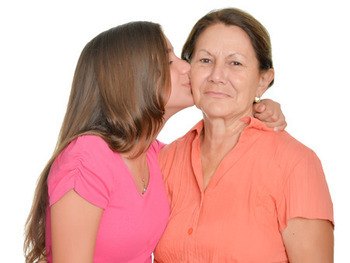 Bone is very complex at a microscopic level. It is not homogeneous. What is sometimes called the "bony" part of the bone is mineral, although there are plenty of other minerals in the other parts of the bone tissue. The bony sections include materials that if removed from the body would be insoluble in water - these are calcium and phosphate salts - much of the bony nodules would be classified as hydroxyapatite
Bone is very complex at a microscopic level. It is not homogeneous. What is sometimes called the "bony" part of the bone is mineral, although there are plenty of other minerals in the other parts of the bone tissue. The bony sections include materials that if removed from the body would be insoluble in water - these are calcium and phosphate salts - much of the bony nodules would be classified as hydroxyapatite
A rough overall chemical formula is [Ca3(P)4)2]3.Ca(OH)2. In a lab this mineral can be dissolved into calcium phosphate, calcium fluoride, calcium carbonate, and calcium hydroxide.
Bone is roughly 30% organic material (by weight) and 70% inorganic mineral. The organic material is about 90% collagen. Other organic material is mostly protein, too, of different kinds. Some of the protein in the bone is not unlike mucus, and there are also constituents of the immune and circulatory systems - blood vessels go through the bone.
Collagen is a protein and a fiber that makes up a good deal of the body. The collagen in bone is type 1 collagen, as opposed to type 2 (found in cartilage) and type 3 (skin includes both type 1 and type 3 collagen).
The strength of the bones is correlated with their mass. A linear regression of bone strength vs bone mass shows a correlation of about 80 percent.
The mineral portion of the bone is shaped into thin sheets called lamellae. Between the lamellae are spaces called lacuna, which are most often occupied by osteocytes.
Osteoclasts are large multi-nucleate cells that move within the bone. They migrate to the surface of the bone and release acids and enzymes that dissolve the mineral bony material This is the destructive part of bone remodeling, or osteoclastogenesis.
Osteocytes are shaped like elongated starfishes. They are also called simply "bone cells" (although this is technically imprecise) or bone-corpuscles. Most of the cells in bone are osteocytes. They connect to each other.
The newer bony material is more elastic and can more easily withstand stress without fracturing. Everyday life subjects bones to microfractures. In younger people, the bone heals and forms calluses. The calluses function to maintain bone strength. Older bone does not so readily form calluses and the tiny fractures may grow. Even if they don't grow, they contribute to the brittleness of the bone.
The body has a number of mechanisms to maintain homeostasis with regard to bone mass and blood serum calcium levels (Indeed, such treatments as calcitonin and PTH analogs directly intercede in the calcium homeostasis system. Calcium-sensing receptors located in the parathyroid gland and the kidney coordinate calcium homeostasis.
 Our bones are constantly remodeled throughout life. The hard mineral matter is broken down by cells called osteoclasts and then built back up by other cells called osteoblasts. This remodeling process is important for healing microscopic fractures that occur during daily activities. Unfortunately the activity of osteoblasts slows down as we age while osteoclasts keep eating away at bone at a fairly steady rate. Over time, this results in low bone density. More on the pathogenesis of osteoporosis.
Our bones are constantly remodeled throughout life. The hard mineral matter is broken down by cells called osteoclasts and then built back up by other cells called osteoblasts. This remodeling process is important for healing microscopic fractures that occur during daily activities. Unfortunately the activity of osteoblasts slows down as we age while osteoclasts keep eating away at bone at a fairly steady rate. Over time, this results in low bone density. More on the pathogenesis of osteoporosis.
As bone loss increases with age, the steady process of remodeling, or bone turnover, removes bone more than it replaces. Remodeling involves two distinct stages:  (1) bone resorption or bone formation, and (2) bone formation. Many factors affect the rate and nature of bone remodeling, including nutrition, load on various parts of the skeleton, and metabolic factors including diseases.
(1) bone resorption or bone formation, and (2) bone formation. Many factors affect the rate and nature of bone remodeling, including nutrition, load on various parts of the skeleton, and metabolic factors including diseases.
As men and women approach age 35, bone breakdown exceeds bone build up and bone density starts to decline.
A study of trends found that hip fractures among Americans increased from the mid-80s to the mid-90s and then declined to the mid 2000s. The mortality rate from hip fractures also decreased during the same period.
